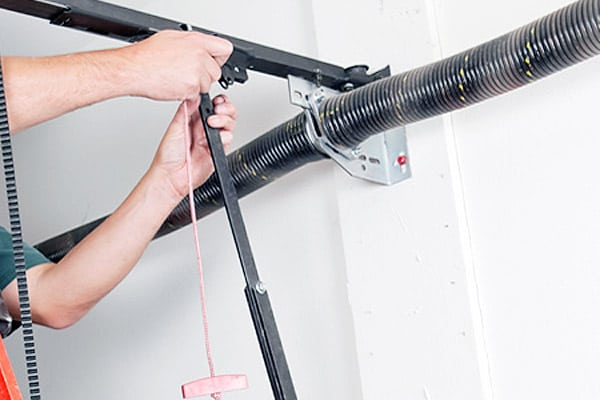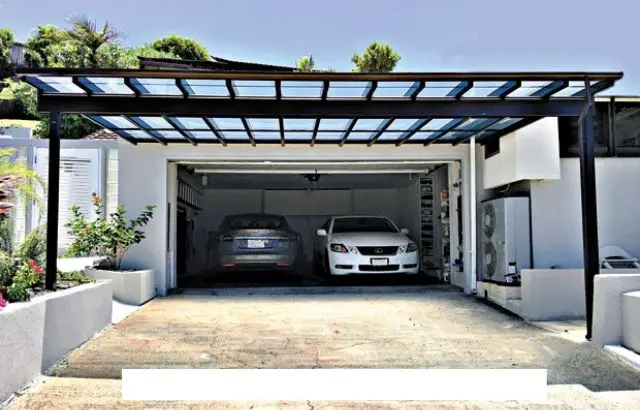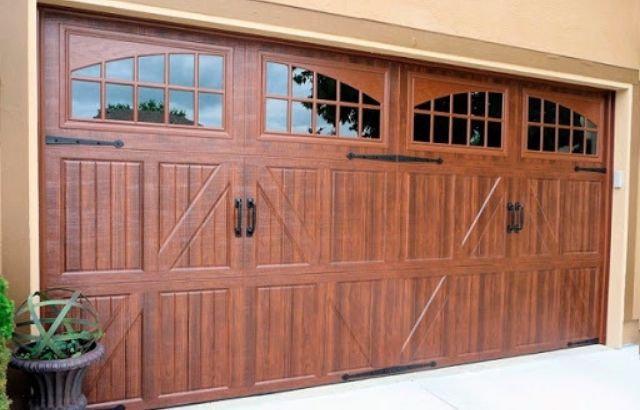The correct tension is essential for the opening and closing of the garage door. If the spring tension is not balanced, the garage door may open or close unevenly or at the wrong speed. You can learn to repair garage door cable tension yourself. However, since springs and cables are under great tension, it is generally safer to work with a professional. In this guide, I will discuss how to adjust garage door cable tension.
Read More: How To Replace Garage Door Extension Spring Cable
How to Adjust Garage Door Cable Tension

To open the door manually or with an automatic opener, the garage door must be properly tensioned. The springs that lift the door will not work once the tension is too loose. The weight of the door will make them unstable. The door will not close entirely or will remain closed if there is too much tension. If your garage has torsion springs in the doorway, you will need a professional to adjust the tension. Sectional and swing gates are set according to the basic procedure for each type.
Tension springs
- Close the garage door. Install a step ladder near the automatic opener. Unplug the power cord from the opener. Pull down on the emergency release cord to release the door from the opening rail.
- Raise the door halfway from the inside using one of the crossbars. If the door remains in the half position unaided, the tension is correct. If it comes down on its own, the tension is too loose too tight if you lift more than half without help.
- Open the door completely by hand. Then, using a handsaw cut a two-by-four bracket that fits vertically on the outside edge of the door. Install the bracket on the outer edge of the door.
- Slide the stepladder on one side into the tension spring area at the top of the door onto the rail. Use a wrench to loosen the locknut on the thread adjusting rod on the end of the pulley and spring assembly.
- Turn the adjuster clockwise three full turns to increase torque when the door is closed, not half-open. Loosen the adjuster counterclockwise three turns when lifting the door unassisted. Repeat the same adjustment on the pulley and the spring adjuster on the opposite rail.
- While holding the outer edge of the door open with one hand, two people remove the bracket. Lower the door halfway and check the tension. Repeat these steps as necessary until the door is half-open.
- Lower the door manually. Pull the disconnect cable to reactivate the normally open contact. Connect the power cord to the automatic opener.
Read More: How To Install Garage Door Springs And Cables
Hinge springs
- Disconnect the door from the automatic opener with the disconnect cable. Go outside the garage.
- Use the outside handle to lift the door. If the door is difficult to lift, the tension on the hinge springs is too weak, and the automatic door closer has to work too hard to lift the door. If the door opens too quickly, it means that the voltage is too high, and the automatic opener has to work too hard to close the door.
- Open the door fully to relieve the hinge springs on either side of the door opening. Install a 2 x 4 vertical bracket on the outside edge of the door to prevent the door from closing when you adjust the springs.
- Ask an assistant to help you adjust the spring tension.
- Put on work gloves. Start with the hinge and spring on one side of the doorway.
- Grasp the spring with both hands and pull it down to allow a second person to release the anchor chain from the hook on the underside of the spring.
- To increase the spring tension, pull the spring down and reattach the hook at the bottom of the spring to the next link in the chain. Reattach the hook to the next link to release the tension. Repeat the same process with the hinge and spring on the other side of the door.
- While holding the door open and remove the bracket. Reattach the door to the opening rail with the separation cable.
Learn More: How To Fix Garage Door Cable That Came Off
How do you Tighten a Loose Garage Door Cable?
Automatic garage door openers make it easy to get in and out of your garage, although the unit does require regular maintenance to ensure proper operation. A loose garage door cable is easy to work with, but you’ll need a few basic tools to secure it properly. If you need help repairing your garage door, contact an experienced mechanic or garage door specialist.
- The door opener must be attached to the garage door mechanism with a rope. Pull this cable to release the door opener from the drive chain.
- When the door is lowered, the springs that raise the door are tensioned. Lift the door to deliver the pressure.
- To prevent the door from moving while working on it, attach two C-clamp to the door track slightly below the pulley closest to the bottom of the door.
- Disconnect the cable. Above the doorway, the cable should be attached to the garage door frame. It should also be a frame with several holes in it. Unplug the end of the cable and slide it further along the frame, then insert it back into the hole to prevent the cable from dangling.
Adjust the cable holder. If the cable is still slack, use pliers to adjust the bracket that secures the cable to the hook on the frame. Next, loosen the bracket with pliers, pull the excess cable through it, and then tighten it again. Finally, secure the wire back to the frame with the hook.
Frequently Asked Questions
What if the garage door cable breaks?
If they are broken or damaged, you should contact a professional for repair. They are trained to safely repair garage doors and troubleshoot cable problems.
What is the size of the garage door cable?
The most common cables are 3/32″, 1/8″, 5/32″, 3/16″, and 1/4″. Since most garage doors weigh 500 pounds or less, a standard 1/8″ is often used steel cable. 5/32 and 3/16 are popular for commercial garage doors. Any garage door larger than 14 feet must use a cable that is at least 5/32 in.
Read More: Common Problems With Genie Garage Door Openers
What is the easiest way to know if my garage door springs need to be adjusted?
A well-balanced garage door should be relatively quiet when opening and closing the gate rails. However, your garage door springs may be under tension and may need to be replaced if it squeaks once you open or closes it.
Is it possible for garage door springs to be too strong?
If your springs are too strong and you pull the springs open the correct number of turns, the door won’t stay on the floor when you close it. It usually doesn’t stay in the center when it’s half-open. However, when it’s fully open, it stays on top.
What can you do to adjust the tension of a garage door spring?
Tension loss can usually be recognized by the fact that the springs have been stretched or elongated.
How do I adjust a spring?
Slide the carabineer into the bottom hole in the door track to release the tension on the garage door spring. This adjusts the tension in the spring. To learn how to tension the rope on the garage door, adjust the garage door springs, increase the strain, and hook the rope into the upper hole on the door rail.
Read More: Best Universal Garage Door Opener App For Android
What amount of pressure should the garage door spring possess?
If your garage door weighs 250 pounds, your torsion springs will need to produce 250 pounds of pressure to open and close it smoothly. Because they exert a lot of force, your torsion springs are under tremendous pressure.
Conclusion
Many homeowners can easily remove the tension from a garage door spring, but only if they have the right equipment and a basic understanding of the garage door mechanism. It becomes more difficult if we are not sufficiently aware of it. The help of a specialist in this field is the best option for you to avoid damage or misalignment of your garage door.




